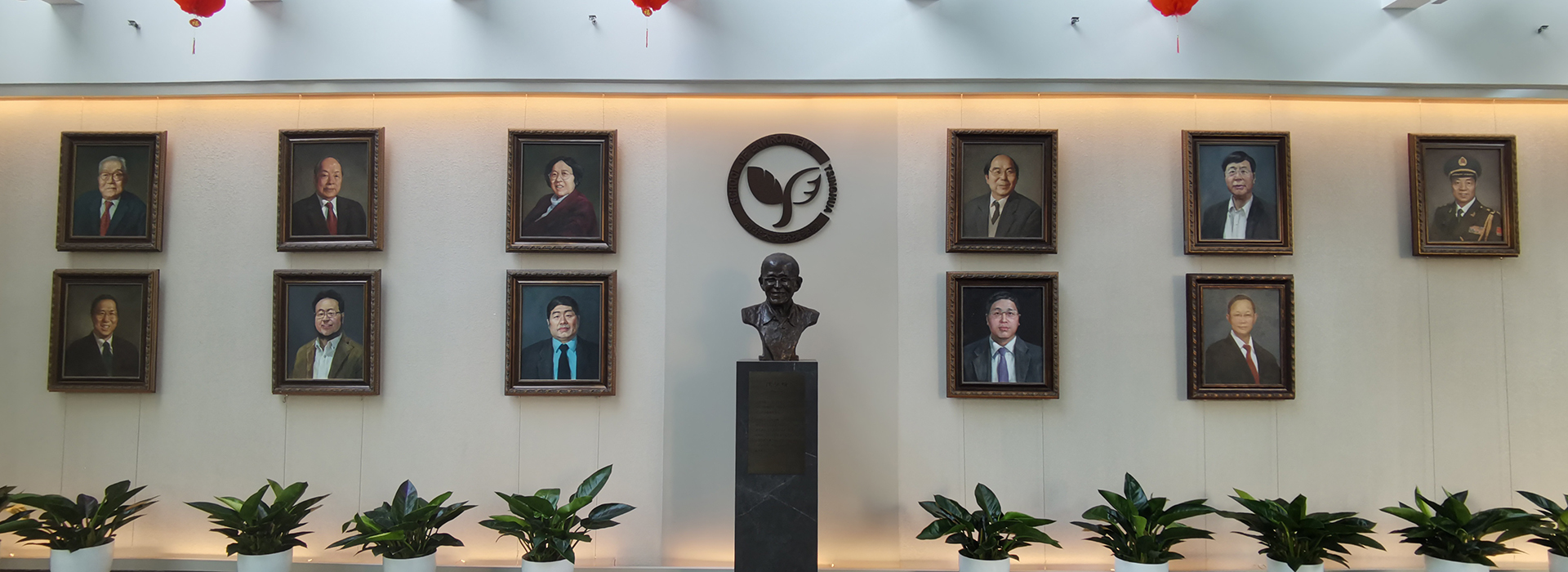[1] Shi XJ, Liu G, Zhang M, Zhao J, Li H, Yang Z, Bai H, Liang P, Lu Y*. Membrane Sensitive Bacterial DNA Extractions and Absolute Quantitation of Recovery Efficiencies. Science of Total Environment, 2019, in press.
[2] Xue J, Zhang J, Qiao J*, Lu Y*. Effects of chlorination and combined UV/Cl2 treatment on endotoxin activity and inhalation toxicity of lipopolysaccharide, gram-negative bacteria and reclaimed water. Water Research, 2019, 155:124-130.
[3] Ren Y, Kong J, Xue J, Shi X, Li H, Qiao J*, Lu Y*. Effects of ozonation on the activity of endotoxin and its inhalation toxicity in reclaimed water. Water Research, 2019, 154:153-161.
[4] Feng Y, Ren Z, Wu F, Reichert A, Lu Y*. Optimization of the gram staining method based on superparamagnetic magnetic nanobeads. Journal of Environmental Accounting and Management, 2018, 6(3):263-271.
[5] Yu T, Sun H, Chen Z, Wang Y-H, Huo Z-Y, Ikuno N, Ishii K, Jin Y, Hu H-Y, Wu Y-H*, Lu Y*. Different bacterial species and their extracellular polymeric substances (EPSs) significantly affected reverse osmosis (RO) membrane fouling potentials in wastewater reclamation. Science of the Total Environment, 2018, 644:486-493.
[6] Li G-Q, Huo Z-Y, Wu Q-Y, Lu Y*, Hu H-Y*. Synergistic effect of combined UV-LEDs and chlorine treatment on Bacillus Subtilis spores inactivation. Science of the Total Environment, 2018, 639:1233-1240.
[7] Xue J, Zhang J, Wu Q-Y*, Lu Y*. Sub-chronic inhalation of reclaimed water-induced fibrotic lesion in a mouse model. Water Research, 2018, 139:240-251.
[8] Chen Z, Yu T, Ngo HH, Lu Y, Li G, Wu Q, Li K, Bai Y, Liu S, Hu HY*. Assimilable organic carbon (AOC) variation in reclaimed water: Insight on biological stability evaluation and control for sustainable water reuse. Bioresource Technology, 2018, 254:290-299.
[9] Xu B, Li K, Qiao J, Liungai Z, Chen C*, Lu Y*. UV photoconversion of environmental oestrogen diethylstilbestrol and its persistence in surface water under sunlight. Water Research, 2017, 127:77-85.
[10] Li GQ; Wang WL; Huo ZY; Lu Y*; Hu HY*. Comparison of UV-LED and low pressure UV for water disinfection: photoreactivation and dark repair of Escherichia coli. Water Research, 2017, 126:134-143.
[11] Lv XT, Zhang X, Du Ye, Wu QY*, Lu Y*, Hu HY. Solar light irradiation significantly reduced cytotoxicity and disinfection byproducts in chlorinated reclaimed water. Water Research, 2017, 126:162-169.
[12] Li GQ, Yu T, Wu QY, Lu Y*, Hu HY*. Development of an ATP luminescence-based method for assimilable organic carbon determination in reclaimed water. Water Research, 2017, 123:345-352.
[13] Liu L, Zhou X*, Lu Y*, Shan D, Xu B, He M, Shi H, Qian Y. Facile screening of potential xenoestrogens by an estrogen receptor-based reusable optical biosensor. Biosensors and bioelectronics, 2017, 97:16-20.
[14] Wang WL, Wu QY*, Li ZM, Lu Y, Du Y, Wang T, Huang N, Hu HY*. Light-emitting diodes as an emerging UV source for UV/chlorine oxidation: Carbamazepine degradation and toxicity changes. Chemical Engineering Journal, 2017, 310:148-156.
[15] Du Y, Wu QY*, Lu Y, Hu HY*, Yang Y, Liu R, Liu F. Increase of cytotoxicity during wastewater chlorination: Impact factors and surrogates. Journal of Hazardous Materials, 2017, 324:681-690.
[16] Yu T, Meng L, Zhao Q-B, Shi Ye, Hu H-Y, Lu Y*. Effects of chemical cleaning on RO membrane inorganic, organic and microbial foulant removal in a full-scale plant for municipal wastewater reclamation. Water Research, 2017, 113:1-10.
[17] Yu T, Li GQ, Lin WQ, Hu H-Y, Lu Y*. Coagulation increased the growth potential of various species bacteria of the effluent of a MBR for the treatment of domestic wastewater. Environmental Science and Pollution Research, 2017, 24(6):5126-5133.
[18] Huo ZY, Xie X*, Yu T, Lu Y, Feng C, Hu HY*. Nanowire-Modified Three-Dimensional Electrode Enabling Low-Voltage Electroporation for Water Disinfection. Environmental Science & Technology, 2016, 50(14):7641-7649.
[19] Xue J, Zhang J, Xu B, Xie J, Wu W, Lu Y*. Endotoxins: the critical risk factor in reclaimed water via inhalation exposure. Environmental Science & Technology, 2016, 50:11957-11964.
[20] Duan R, Lu Y*, Hou L, Du L, Sun L, Tang X. U-shaped microRNA expression pattern could be a new concept biomarker for environmental estrogen. Frontiers of Environmental Science & Engineering, 2016, 10(6):11.
[21] Li M, Xu B, Liungai Z, Hu H-Y, Qiao J*, Lu Y*. The removal of estrogenic activity with UV/chlorine technology and identification of novel estrogenic disinfection by-products. Journal of Hazardous Materials, 2016, 307:119-126.
[22] Zhang J, Xue J, Xu B, Xie J, Qiao J*, Lu Y*. Inhibition of Lipopolysaccharide Induced Acute Inflammation in Lung by Chlorination. Journal of Hazardous Materials, 2016, 303:131-136.
[23] Yang Y, Lu Y*, Wu QY, Hu H-Y*, Chen YH, Liu WL. Evidence of ATP assay as an appropriate alternative of MTT assay for cytotoxicity of secondary effluents from WWTPs. Ecotoxicology and Environmental Safety, 2015, 122:490-496.
[24] Shang G, Xue J, Li M, Hu H-Y, Lu Y*. Estrogen receptor affinity chromatography: a new method for characterization of novel estrogenic disinfection by-products. Chemosphere, 2014, 104:251-257.
[25] Xue J, Shang G, Tanaka Y, Saihara Y, Hou L, Velasquez N, Liu W, Lu Y*. Dose-dependent inhibition of gastric injury by hydrogen in alkaline electrolyzed drinking water, BMC Complementary and Alternative Medicine, 2014, 14:81.
[26] Wu Y-H, Hu H-Y*, Yu Y, Zhang T-Y, Zhu S-F, Zhuang L-L, Zhang X, Lu Y. Microalgal species for sustainable biomass/lipid production using wastewater as resource: A review. Renewable and Sustainable Energy Reviews, 2014, 33:675-688.
[27] Hou LY, Lu Y*, Li Y, Li L. MiRNA-451 is a potential biomarker for estrogenicity in mouse uterus. Frontiers of Environmental Science and Engineering, 2014, 8(1):99-105.
[28] Liu KC, Jiang M, Lu Y, Chen H, Sun J, Wu SP, Ku WY, Nakagawa H, Kita Y, Natsugoe S, Peters JH, Rustgi AK, Onaitis MW, Kiernan A, Chen XX, Que JW*. Sox2 Cooperates with Inflammation-Mediated Stat3 Activation in the Malignant Transformation of Foregut Basal Progenitor Cells. Cell Stem Cell, 2013, 12(3):304-315.
[29] Xue J, Lu Y*, Velasquez N, Yu R-Z, Hu H-Y, Liu Z-T, Meng W. Introduction of risk size in the determination of uncertainty factor UFL in risk assessment. Environmental Research Letters, 2012, 7(3):034036.
[30] Xu, X; Rock, JR; Lu, Y; Futtner, C; Schwab, B; Guinney, J; Hogan, BLM; Onaitis, MW*. Evidence for type II cells as cells of origin of K-Ras-induced distal lung adenocarcinoma. PNAS, 2012, 109(13): 4910-4915.
[31] Huang J-J, Hu H-Y*, Wu YH, Wei B, Lu Y. Effect of chlorination and ultraviolet disinfection on tetA-mediated tetracycline resistance of Escherichia coli. Chemosphere, 2012, 90(8):2247-2253.
[32] Huang J-J, Hu H-Y*, Lu SQ, Li Y, Tang F, Lu Y, Wei B. Monitoring and evaluation of antibiotic-resistant bacteria at a municipal wastewater treatment plant in China. Environmental International, 2012, 42:31-36.
[33] Huang J-J, Hu H-Y*, Tang F, Li Y, Lu SQ, Lu Y. Inactivation and reactivation of antibiotic-resistant bacteria by chlorination in secondary effluents of a municipal wastewater treatment plant. Water Research, 2011, 45(9):2775-2781.
[34] Lu Y, Futtner C, Rock JR, Xu X, Whitworth W, Hogan BLM, Onaitis MW*. Evidence that SOX2 overexpression is oncogenic in the Lung. Plos One 2010;5:-.
[35] Lu Y*, Hou L, Hu H-Y, Li L. Progress in toxicogenomics. Ecology and Environmental Sciences, 2010, 19(9):2232-2239.
[36] Rock JR, Onaitis MW, Rawlins EL, Lu Y, Clark CP, Xue Y, Randell SH, Hogan BLM*. Basal cells as stem cells of the mouse trachea and human airway epithelium. Proceedings of the National Academy of Sciences of the United States of America 2009;106:12771-12775.
[37] Erhunmwunsee L, Lu Y, Luo XY, Harpole DH, Hogan BLM, Onaitis MW*. Basal cells in lung cancer. Journal of the American college of surgeons, 2008, 207(3):S30-S30.
[38] Lu Y, Thomson JM, Wong HY, Hammond SM, Hogan BL*. Transgenic over-expression of the microRNA miR-17-92 cluster promotes proliferation and inhibits differentiation of lung epithelial progenitor cells. Dev Biol. 2007 Oct 15;310(2):442-53. Epub 2007 Aug 9.
[39] Zhang G, Lu H, Lu Y, Jiang S, Chen YH*. Neutralization of HIV-1 primary isolate by ELDKWA-specific murine monoclonal antibodies. Immunobiology. 2005;210(9):639-45.
[40] Liu W, Zou P, Ding J, Lu Y, Chen YH*. Sequence comparison between the extracellular domain of M2 protein human and avian influenza A virus provides new information for bivalent influenza vaccine design. Microbes Infect. 2005 Feb;7(2):171-7. Epub 2004 Dec 25.
[41] Liu W, Peng Z, Liu Z, Lu Y, Ding J, Chen YH*. High epitope density in a single recombinant protein molecule of the extracellular domain of influenza A virus M2 protein significantly enhances protective immunity. Vaccine. 2004 Dec 2;23(3):366-71.
[42] Lu Y, Chen YH*. Spike protein homology between the SARS-associated virus and murine hepatitis virus implies existence of a putative receptor-binding region. Chinese Science Bulletin, 2003, 48(11):1115-1117
[43] Liu WL, Lu Y, Chen YH*. Bioinformatics analysis of SARS-CoV M protein provides information for vaccine development. Progress in Natural Science, 2003, 13(11):844-847
[44] Lu Y, Ding J, Liu WL, Chen YH*. A candidate vaccine against influenza virus intensively improved the immunogenicity of a neutralizing Epitope. International Archives of Allergy and Immunology, 2002, 127(3):245-250
[45] Lu Y, Ding J, Chen YH*. Immunogenicity and specificity of the candidate multi-epitope-vaccines against HIV-1. Immunopharmacology and Immunotoxicology, 2001, 23(4):487-494
[46] Xiao Y, Lu Y, Chen YH*. Epitope-vaccine as a new strategy against HIV-1 mutation. Immunology Letters, 2001, 77:3-6
[47] Ding J, He F, Lu Y, Xiao Y, Chen YH*. Induction of multi-epitope-specific antibodies against HIV-1 by multi-epitope-vaccines. Chinese Science Bulletin, 2001, 46(22):1859-1864
[48] Yang HW, Xiao Y, Lu Y, Chen YH*. Characterization of interaction between C-domain on HIV-1 gp41 and the putative receptor protein p62. Immunobiology, 2001, 203(5):778-785
[49] Lu Y, Xiao Y, Ding J, Dierich MP, Chen YH*. Immunogenicity of neutralizing epitopes on multiple-epitope- vaccines against HIV-1. International Archives of Allergy and Immunology, 2000, 121(1):80-84
[50] Lu Y, Ding J, Xiao Y, Chen Y*. Multi-epitope-vaccines intensively increased levels of antibodies recognizing three neutralizing epitopes on HIV –1 envelop protein. Scandinavian Journal of Immunology, 2000, 51(5):497-501
[51] Liao MF, Lu Y, Xiao Y, Dierich MP, Chen YH*. Induction of high level of specific antibody response to the neutralizing epitope ELDKWA on HIV-1 gp41 by peptide-vaccine. Peptides, 2000, 21(4):463-468
[52] Ding J, Lu Y, Chen YH*. Candidate multi-epitope-vaccines in aluminium adjuvant induce high levels of antibodies with predefined multi-epitope-specificity against HIV-1. FEMS Immunology and Medical Microbiology 2000, 29(2):123-127
[53] Xiao Y, Liao MF, Lu Y, Dierich MP, Chen YH*. Epitope-vaccines: A new strategy to induce high levels of neutralizing antibodies against HIV-1. Immunobiology, 2000, 201(3-4):323-331
[54] Xiao Y, Zhao YX, Lu Y, Chen YH*. Epitope-vaccine induced high levels of ELDKWA-epitope-specific neutralizing antibody. Immunological Investigation, 2000, 29(1):41-50





